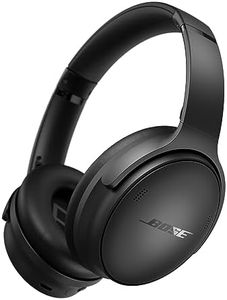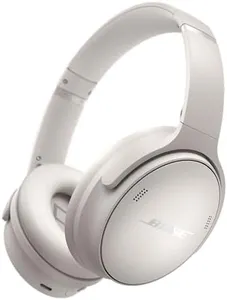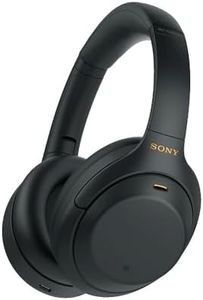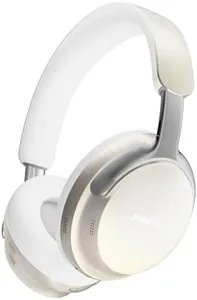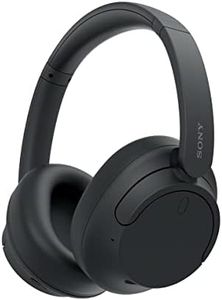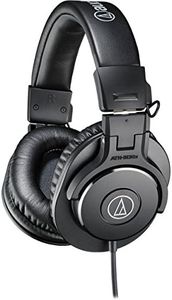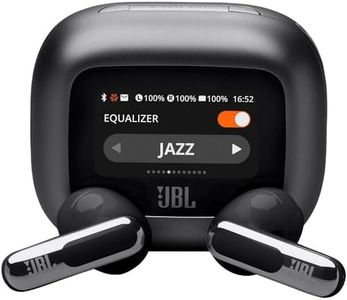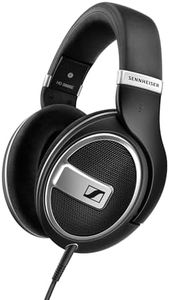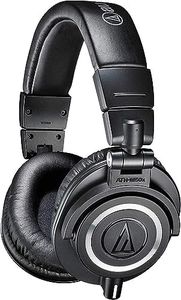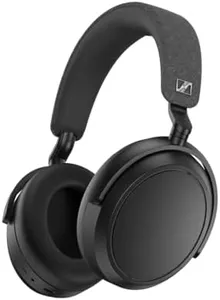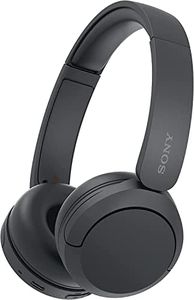We Use CookiesWe use cookies to enhance the security, performance,
functionality and for analytical and promotional activities. By continuing to browse this site you
are agreeing to our privacy policy
10 Best Headphones For Flying
From leading brands and best sellers available on the web.Buying Guide for the Best Headphones For Flying
Choosing the right headphones for flying can make a big difference in your comfort and enjoyment during flights. Airplane cabins are noisy, and you want headphones that offer clear sound, block out noise, and remain comfortable over long periods. When shopping, considering how you’ll use the headphones, how often you fly, and your comfort preferences will help you pick the best fit for your needs.Noise CancellationNoise cancellation is a feature that reduces unwanted background sounds by using microphones and special electronics in the headphones. This is especially important when flying because airplane engines and cabin noise can be very loud and tiring. There are different levels: passive noise isolation (which relies on the earcup or ear tip design alone) and active noise cancellation (which uses electronics to cancel noise). Active noise cancellation is generally better for flights, but some people prefer the feel of passive models. If you fly frequently or want the most peaceful experience, go for strong active noise cancellation. For casual flyers or those who are sensitive to electronic effects, good passive noise isolation may be enough.
Comfort and FitComfort and fit refer to how the headphones feel on your ears and head during extended use. Since flights can be long, uncomfortable headphones can become a real problem. Headphones come in different styles like over-ear, on-ear, and in-ear. Over-ear models usually offer more comfort and better isolation for long flights, while in-ear headphones are smaller and more portable but can cause discomfort if worn for many hours. If you’re flying long distances, prioritize over-ear headphones with soft padding. For short flights or if you prefer lightweight gear, in-ear models may be best.
Battery LifeBattery life is how long your wireless or noise-cancelling headphones work before needing a recharge. Since flights can be several hours or even overnight, battery life is crucial. Some headphones can last 20 hours or more, while others only a few hours with noise cancelling on. If you take long-haul flights or want to avoid charging between flights, choose headphones with longer battery life. For mostly short trips, moderate battery life may be sufficient.
PortabilityPortability is about how easy it is to carry and store your headphones. Large, over-ear headphones might be bulkier but often come with protective cases. In-ear models are very compact and convenient to stash in a pocket or bag. Think about your travel habits: if you like to pack light or frequently switch flights, compact and foldable designs will be easier to manage. If sound quality and comfort matter more, you might be willing to carry something larger.
Wired vs WirelessWired vs wireless describes how your headphones connect to your device. Wireless headphones offer more freedom and less tangling, but airplanes often have in-flight entertainment systems that require a wired connection. Some headphones offer both options, which is great for flexibility. If you want to use the airline’s entertainment, choose headphones that include a cable. If you use your own devices exclusively, wireless may be more convenient.
Sound QualitySound quality is how clear, balanced, and rich the audio is. Good sound can make audio entertainment much more enjoyable during flights, especially when cabin noise is present. Headphones come with different sound profiles, from heavy bass to balanced sound. If you listen to music, movies, or podcasts frequently, choose headphones known for good sound clarity and depth. For occasional use, very high sound quality might not be as important.
